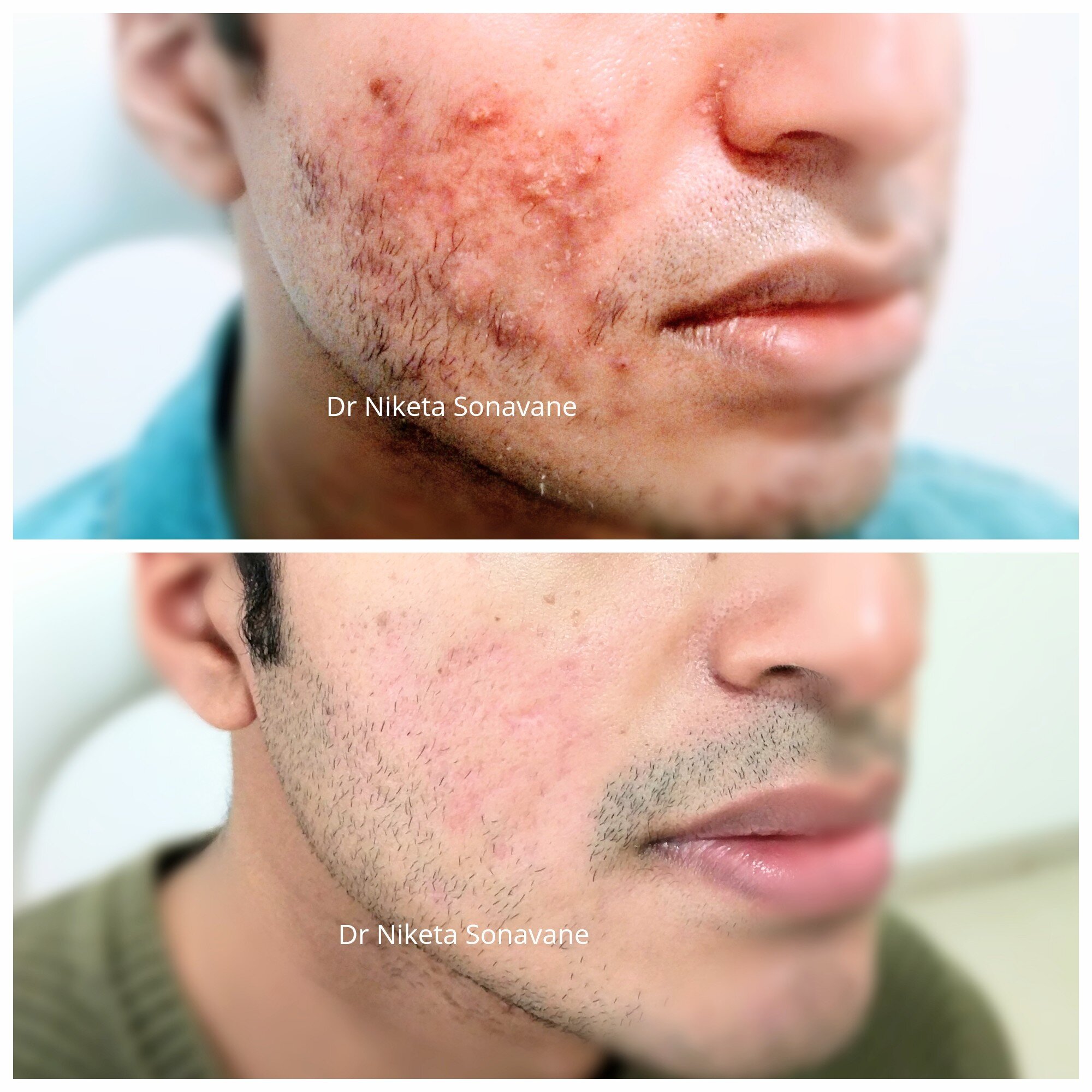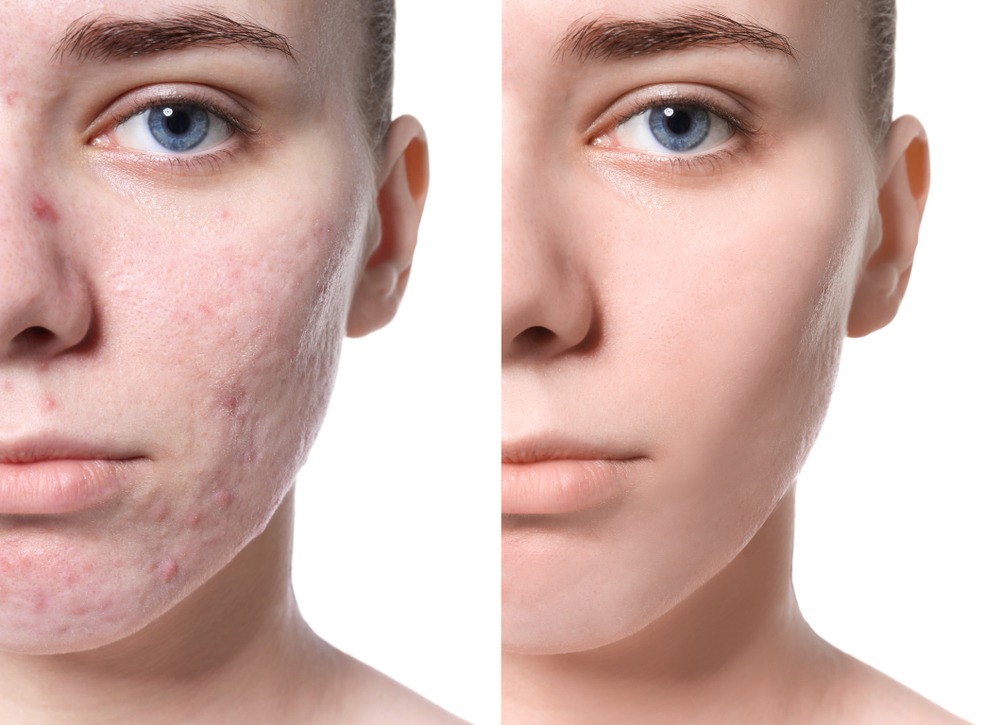Top Acne Treatment for Sensitive Skin: Gentle Solutions for Clear Skin
Exploring Skin Problem: Dealing With and determining Acne Scars for Healthier Skin
Acne scars represent a considerable problem for people looking for to keep healthy skin, as they can influence both appearance and self-confidence. Understanding the various kinds of scars, from atrophic to hypertrophic, is necessary for figuring out ideal therapy options. While specialist interventions like chemical peels and microneedling can be effective, the relevance of customized care strategies can not be overemphasized. Preventative procedures play an essential duty in reducing future scarring. As we check out these elements, one should think about how the ideal strategy can bring about transformative outcomes.
Understanding Acne Marks

The body's all-natural healing procedure can result in either atrophic scars, which look like clinical depressions in the skin, or hypertrophic marks, which are raised and arise from overproduction of collagen. Furthermore, the emotional toll of acne scars ought to not be undervalued; many individuals report feelings of humiliation, anxiousness, and lowered self-esteem. This emotional problem can influence social communications and overall lifestyle.
Resolving acne marks requires an extensive understanding of their formation and effect. Understanding of the potential for long-term consequences related to neglected marks can inspire people to look for ideal therapies. Early treatment and reliable monitoring strategies can considerably improve skin appearance and improve mental durability, highlighting the value of recognizing the intricacies bordering acne marks.
Sorts Of Acne Scars
Acne scars can be categorized into distinctive kinds, each displaying one-of-a-kind qualities and needing particular therapy techniques. acne scars treatment. The key kinds of acne scars include atrophic, hypertrophic, and keloid scars

Hypertrophic marks, in comparison, are increased over the skin level and are the outcome of extreme collagen production throughout the healing procedure. They normally stay within the borders of the original acne sore. Keloid scars are comparable but expand beyond the initial injury website, developing bigger, raised locations that can be itchy or unpleasant.
Recognizing these kinds of scars is necessary for selecting suitable therapy alternatives. Various scars may respond much better to details treatments, such as laser treatments, fillers, or medical treatments, stressing the importance of a tailored technique to acne mark monitoring.
Recognizing Your Scars
When evaluating the look of your skin, it is essential to accurately recognize the type of marks present, as this will certainly notify one of the most effective therapy technique. Acne marks typically fall under 2 categories: hypertrophic and atrophic scars. Atrophic marks, site which are the most usual, look like clinical depressions or imprints on the skin. These can better be identified into ice-pick marks, boxcar scars, and rolling marks, each displaying distinctive attributes and requiring different strategies for evaluation.
Hypertrophic scars, on the other hand, are increased and take place as a result of too much collagen production during the healing process. Acknowledging the details functions of your scars-- such as texture, size, and depth-- is crucial for appropriate recognition (acne scars treatment). Additionally, take into consideration the distribution of marks across your skin, as this can suggest the intensity and duration of the acne condition
Engaging with a dermatologist can provide valuable insights right into the nature of your marks, helping in the differentiation between various kinds. A thorough understanding of your marks will inevitably cause a much more tailored and reliable therapy strategy, guaranteeing a clearer and healthier skin.
Therapy Choices Offered
Identifying the particular sort of acne scars existing on your skin lays the foundation for discovering efficient therapy options. Common kinds of acne marks consist of atrophic (depressed), hypertrophic (elevated), and post-inflammatory erythema.
For atrophic scars, options such as chemical peels, microneedling, and laser resurfacing are widely used. Chemical peels off make use of acids to get rid of the external layer of skin, advertising new cell growth.
Hypertrophic marks can be treated with corticosteroid shots to flatten the scar or laser treatment to lower inflammation and improve look. Silicone gel sheets and pressure dressings might also help in handling elevated scars.
Furthermore, dermal fillers can temporarily complete anxieties from atrophic marks, while surgical excision may be appropriate for extreme situations. Each therapy choice has its factors to consider and benefits, making it necessary to speak with a dermatologist. They can offer customized suggestions based upon the type and seriousness of your marks, along with your skin type and overall health and wellness.
Tips for Avoidance
Effective prevention approaches can significantly decrease the probability of creating acne marks. The first step is to maintain a constant skin care regimen that consists of mild cleaning, peeling, and hydrating. Making use of non-comedogenic products helps avoid stopped up pores, click to read more which can aggravate acne. Additionally, integrating topical therapies containing salicylic acid or benzoyl peroxide can properly lessen and manage breakouts swelling.
Avoiding the urge to pop or pick acne lesions is vital, as this can cause much deeper skin damages and boost the risk of scarring. Instead, consider using a cold compress or over the counter treatments to decrease swelling and inflammation.
Sun security is another vital facet original site of avoidance; ultraviolet (UV) rays can dim scars and prevent the recovery process. Applying a broad-spectrum sun block with at the very least SPF 30 daily can safeguard the skin and promote even recovery.
Finally, maintaining a well balanced diet plan rich in antioxidants, minerals, and vitamins supports skin health and recovery. Staying moisturized and handling tension degrees can likewise play a significant role in lowering acne flare-ups. By executing these strategies, people can substantially reduce their opportunities of establishing acne scars.
Conclusion
In conclusion, understanding and identifying acne scars is crucial for effective treatment and accomplishing much healthier skin. Various kinds of acne marks, including hypertrophic and atrophic scars, necessitate particular interventions customized to specific demands.
The body's all-natural recovery procedure can result in either atrophic marks, which show up as depressions in the skin, or hypertrophic marks, which are raised and result from overproduction of collagen. They are further separated right into 3 subtypes: ice choice marks, boxcar marks, and rolling marks. Acne scars normally drop right into 2 groups: hypertrophic and atrophic marks. These can additionally be categorized into ice-pick scars, boxcar scars, and rolling marks, each showing distinctive features and calling for various techniques for evaluation.
Various types of acne marks, consisting of hypertrophic and atrophic scars, necessitate specific treatments customized to private requirements.